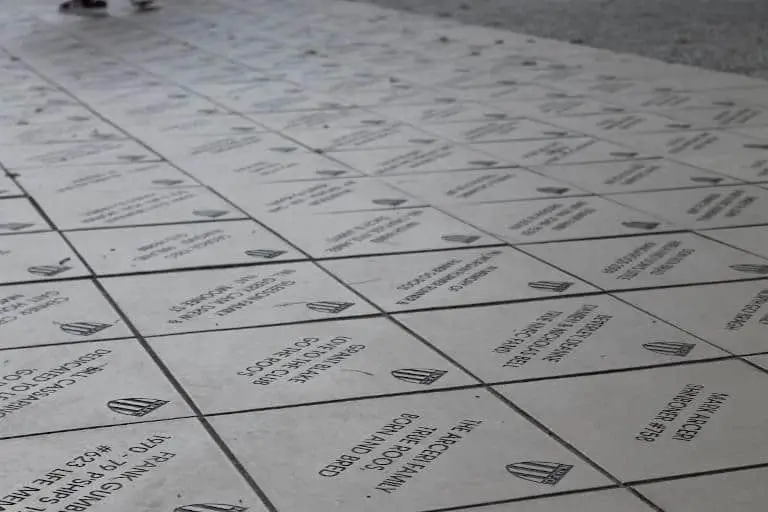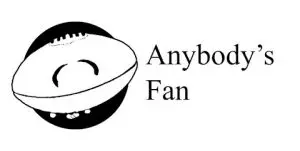I was at my local footy club yesterday, basking in the heartbeat of our local community when I noticed the little under 9’s training on the kid’s oval. It made me remember how fun footy was at that age – learning the skills with your friends free from the pressure of winning. It got me thinking about the journey from young footballer at age 8 to being drafted by a professional AFL club at age 18.

Here is how to get drafted into the AFL:
- Get scouted into a representative football league, usually happens around age 15
- Be selected to play in elite under 18’s or under 19’s competitions
- Play in the AFL National Championship
- Nominate to the AFL draft – this is where the AFL teams will pick from
I’ve gone in to further detail on each of the steps below. Anyone who makes it to the AFL draft but isn’t picked by a team gets an opportunity to be part of the Rookie Draft; I’ve also included details about this and the mid-season draft.
Step 1: Under 15’s and Representative Football
At around the age of 15 the best and talented kids from around the country start to get noticed and scouted.
To be noticed and scouted by age 15, my top advice would be to get involved with footy.
- Practice in your spare time: I used to kick a footy around the yard by myself;
- Try to improve technique: Have a friend video you and watch the video to see how you can improve;
- Get involved with your club. Find extra bits and pieces you can do to go the extra mile. Be the first out there at training, and the last helping to pack up. Join in on the weekend and throughout the week to see what else the club is up to.
Getting involved applies to the secondary school team as much as the local footy club. Whichever you play at, there are ways to go that extra mile.
Playing on a representative team is the goal here. Players who are noticed and scouted are selected to join these teams.
When I was 15 I was selected for one of these representative teams in the Western Region Football League. There are 132 other competitions around the country all offering a showcase of the next generation from each local area. The competition is tough as the next step is to play in an elite under 18’s or under 19’s competition.
Step 2: Play in an Elite Under 18’s or Under 19’s Competition
Be one of the best players in the representative games to get selected to play in elite under 18’s and under 19’s competitions.
At this level the budding young athletes get taught professionalism and are scrutinised by the AFL clubs. Scouts meet the players constantly to see if a player is good enough to be drafted.
AFL football requires the right mentality and professionalism, as well as performance on the field. Having the right mentality at this stage is important. Scouts are considering this when assessing the elite U18’s and U19’s players.
The important leagues at this stage are: In Victoria, the NAB league; in Western Australia, the WAFL U19’s; in South Australia, the SANFL U19’s. There are other elite competitions for the other states.
The best players from these elite competitions are selected to represent their state or territory at the Under 18’s AFL National Championship.
Step 3: Play in the AFL National Championship
The AFL National Championship is a chance for young players to showcase their skills and cement themselves on the radar of recruiters.
Half way through the year, the best performers from the NAB League, WAFL U19’s, SANFL U19’s and the other competitions are selected to represent their state or territory at the Under 18’s AFL National Championship.
The championship is a 6 week round robin format consisting of teams representing South Australia, Western Australia, Victoria Country, Victoria Metro and the Allies (made up of the other states and territories). This is the ultimate opportunity for prospective young footballers.
To do well in the AFL National Championships:
- Maintain professionalism
- Have the right mentality
- Perform under pressure
Performing under pressure is about more than being able to play the game well with everyone watching. The players have to play the game technically well, work well as part of the team, and maintain their professionalism and mentality. All this while feeling the pressure of a once in a lifetime opportunity with a whole future at stake.
Performing under pressure is the test of an AFL player; passing the test leads to the draft. I’ve watched many a potential future star crumble under the pressure of the Championships; it destroys their chances of being drafted.
Step 4: Nominate to the AFL Draft
Scouts and teams nominate players for the AFL draft.
There are 3 opportunities each season to be drafted in the AFL:
- Regular draft
- Rookie draft
- Mid-season draft
The players nominated to the draft are those that have performed well, have performed under pressure, have the right mentality, and the right professionalism.
The regular draft gives the clubs an opportunity to pick new players. The number of players selected from the regular draft changes from year to year. Last year there were 843 nominations and 65 players selected. The most productive year was 1992 which had 124 players selected from the draft.
Players are drafted to AFL teams using the reverse ladder positions from the previous season. The bottom team gets the number one draft pick.
Rookie Draft
The remaining nominations that were not drafted get a second chance at the AFL via the rookie draft.
The rookie draft is the opportunity for teams to select a back-up team to fill in positions if a main player is unavailable. Each team can select up to 6 rookies. Rookies though may include players who have been cut by their clubs or older players at lower levels who never had an opportunity to play in the AFL.
There have been a number of remarkable success stories from the rookie list. Some players who were overlooked initially have become champions of their clubs and the leagues, including Brownlow Medallists and club captains.
The rookie list may be abolished soon. The AFL Players Association has had a long time desire to abolish the rookie list. Rookies are paid less than main list players and are ineligible to play unless promoted to the main list. Promotion to the main list is difficult and requires special circumstances such as main list player retirement or long term injury.
Category B Rookies
A Category B rookie is a player who has been recruited to the rookie list but not via the rookie draft. These players are recruited from scholarship programmes, athletes from multicultural or disadvantaged upbringings, players from remote parts of Australia, or players from overseas and other sports.
Many category B rookies are coming from Ireland’s Gaelic Football and the American college system.
Each club is allowed up to 3 Category B rookies. There is no real difference other than the above between the categories of rookies. The same rules apply for promotion to being a main list player.
Mid-Season Draft
The mid-season draft is an opportunity for clubs to replace main list team vacancies that have been caused by long term injury or premature retirement. Players who had previously played in the AFL, and players who had been nominated for the previous draft and rookie draft are eligible.
The mid-season draft become a regular event in 2019, after a break since 1993. In 2019 one of the players drafted was 27 year old Marlion Pickett. Widely regarded as the best player outside the AFL for a number of years, he was overlooked at numerous drafts. He was seen as too big of an off-field risk due to a prior prison term.
He would not be denied though. Despite a broken finger at the time, he was recruited by the Richmond Tigers. What came next is one of my favourite football stories:
After recovery from the finger Pickett then starred in Richmond’s Reserves team, winning the game MVP medal for the Victorian Football League grand final(2nd tier competition). The senior Richmond team had, that same day, won a place in the AFL grand final and remarkably, despite never playing an AFL game, Pickett was in the frame for selection.
When the teams were announced for the Grand Final an emotional Pickett, overlooked and ignored for so long, would be selected, becoming the first player in 68 years and the only the 6th in 124 years to debut in an AFL Grand Final.
In front of over 100,000 at the might MCG Pickett was outstanding, finishing 3rd in MVP voting and capping off one of footballs greatest redemption stories by being part of Richmond’s crushing Grand Final win over the Greater Western Sydney Giants.
My Draft Experience
I made it to the representative teams. Unfortunately I wasn’t one of the ones who made it through to the elite junior competitions.
In 2004 I skipped school to go see Victoria Metro play Western Australia, there I saw a young man by the name Lance “Buddy” Franklin in one of the most remarkable finishes to a game I think I have ever seen. Franklin would latter go on to be one of the AFL’s modern day greats and of the most prolific goal kickers in the games history. Back in 2004 though he was still a tall, skinny kid, obviously talented but struggling to that point in the National Championships.
With his state seemingly down and out and himself having a quiet game, Franklin with one second left collected the ball and kicked a great goal. He didn’t have a great day, but it was a great moment, a moment that showed the composure and freakish ability of a future champion. I often wonder if not for that special moment, would he have ever been drafted? Maybe so, but that moment made it certain that his name would be called out at the draft.
Conclusion
From child to adult, the journey to become an AFL player is quite a unique one, from junior representative teams, under age national championships and finally having your named called out by an AFL recruiter on draft night.
Then of course there is the rookie and mid season draft, were so many of the games greats have started there careers seemingly from nowhere after being overlooked initially. And who can forget those Category B rookies? Courageously travelling from around the world and from different sports to try and make it as a professional athlete in a foreign game, on a base salary and with limited opportunities.
References
In putting this article together I made reference to a few different sources. Check them out below:
- https://en.wikipedia.org/wiki/List_of_Australian_rules_football_clubs_in_Australia
- https://en.wikipedia.org/wiki/AFL_Under_18_Championships#cite_note-1
- https://www.draftguru.com.au/
- https://en.wikipedia.org/wiki/Rookie_list
- https://www.heraldsun.com.au/sport/afl/aflpa-push-to-axe-rookie-list/news-story/8f6db1547c29c52987092653050a8c05
- https://www.afl.com.au/about-afl/rookie-players
- https://www.afl.com.au/news/131710/mid-season-draft-your-questions-answered
- https://thewest.com.au/sport/richmond-tigers/watch-marlion-picketts-emotional-jumper-handover-from-shaun-grigg-ng-b881337422z
- https://www.news.com.au/sport/afl/afl-grand-final-2019-giants-lowest-grand-final-score-in-59years/news-story/7630c0629d5e95a5403a47ed730acf47
Cass was one of the unfortunate many who didn’t quite make it in to the AFL draft. He’s shared some of his experience and stories here to help so that others can make it to the top level of footy in Australia
